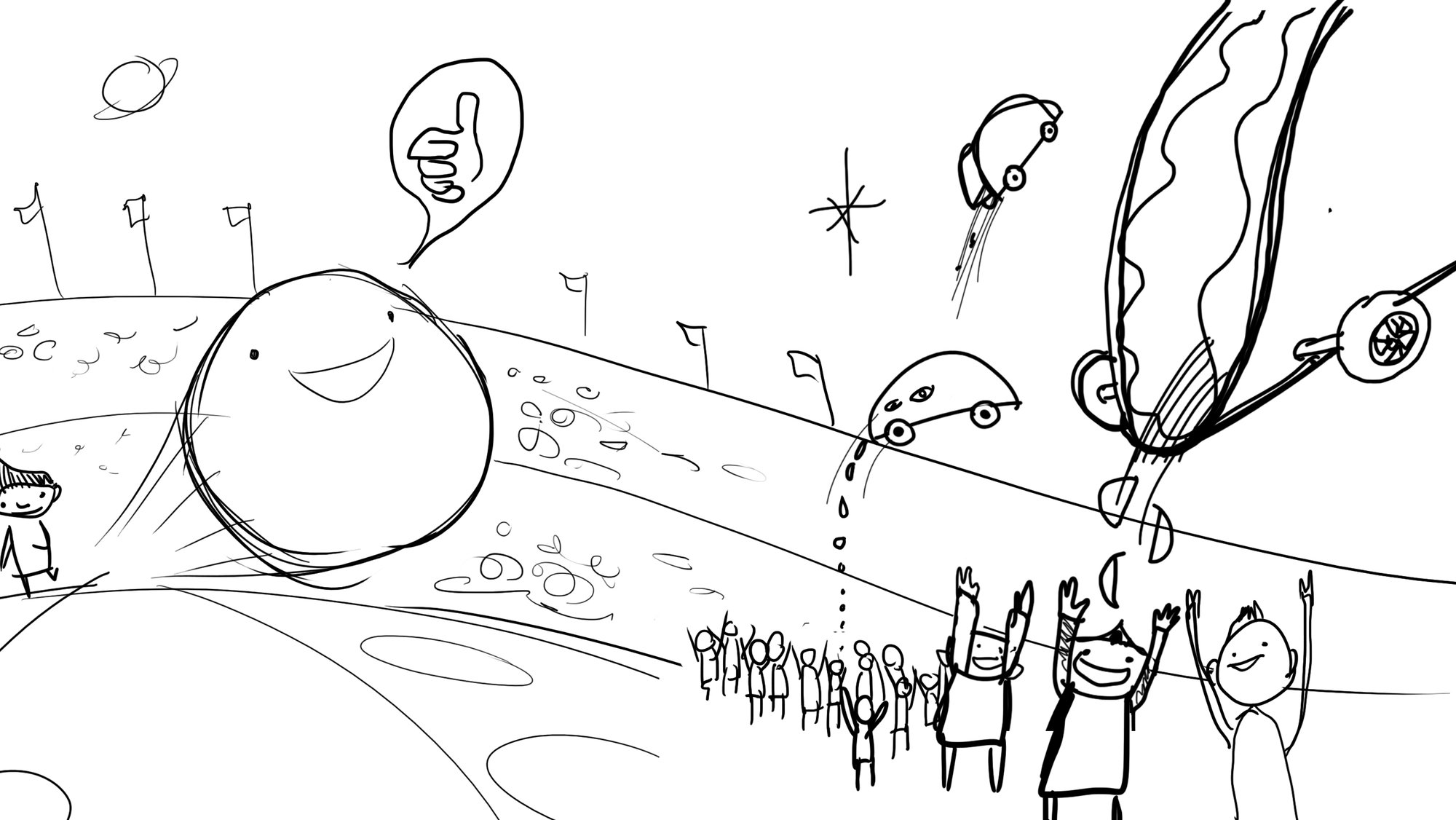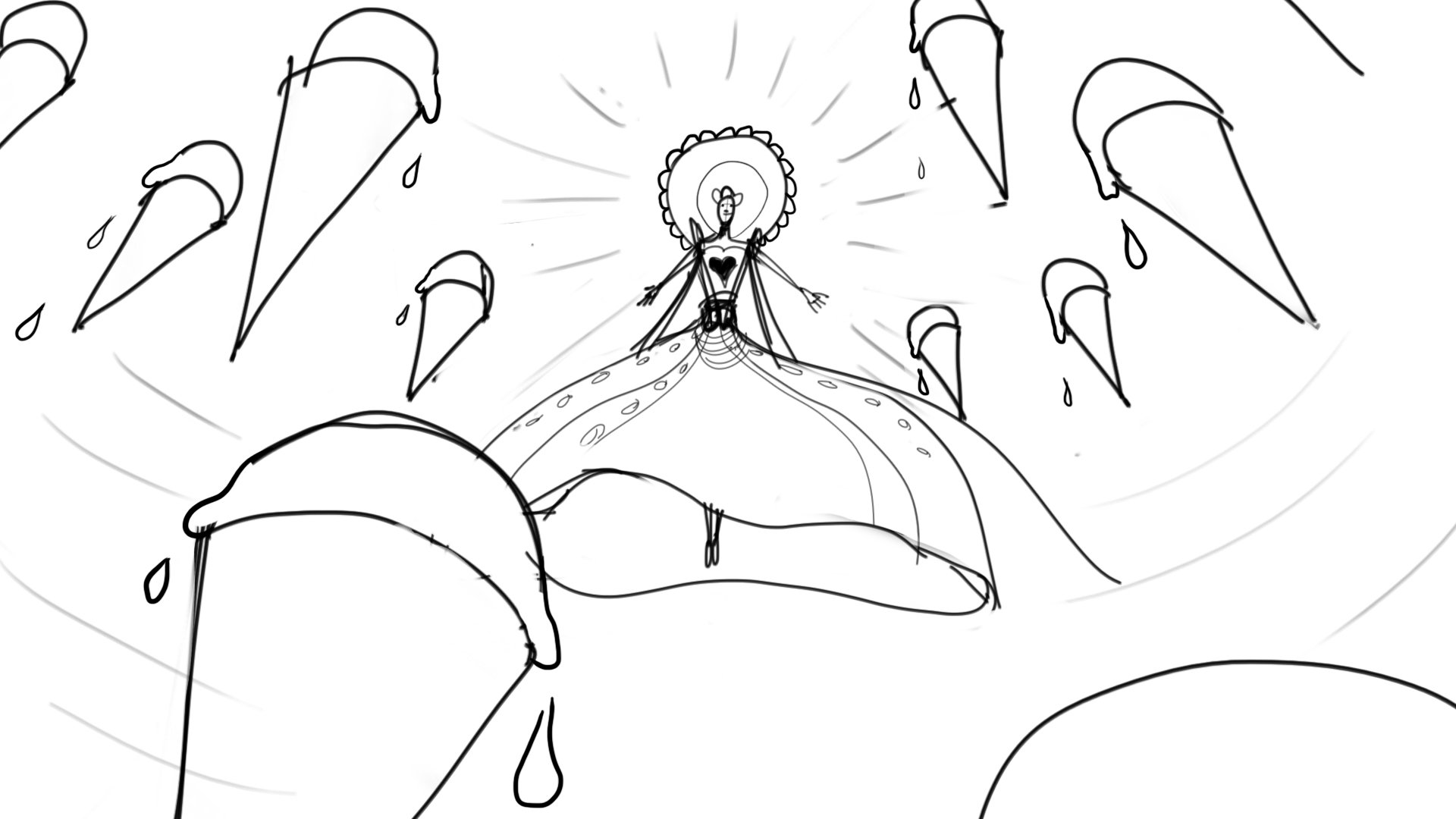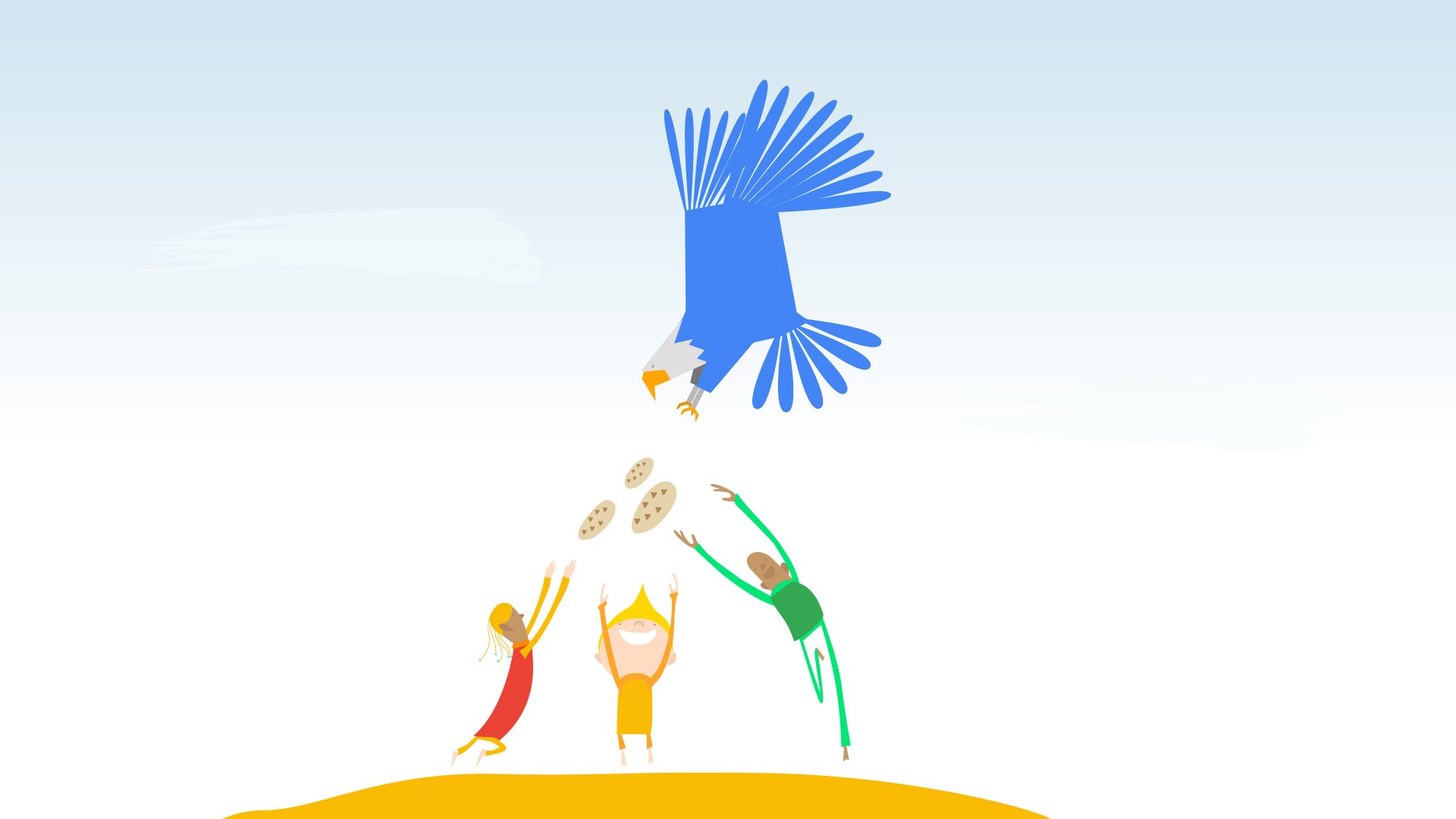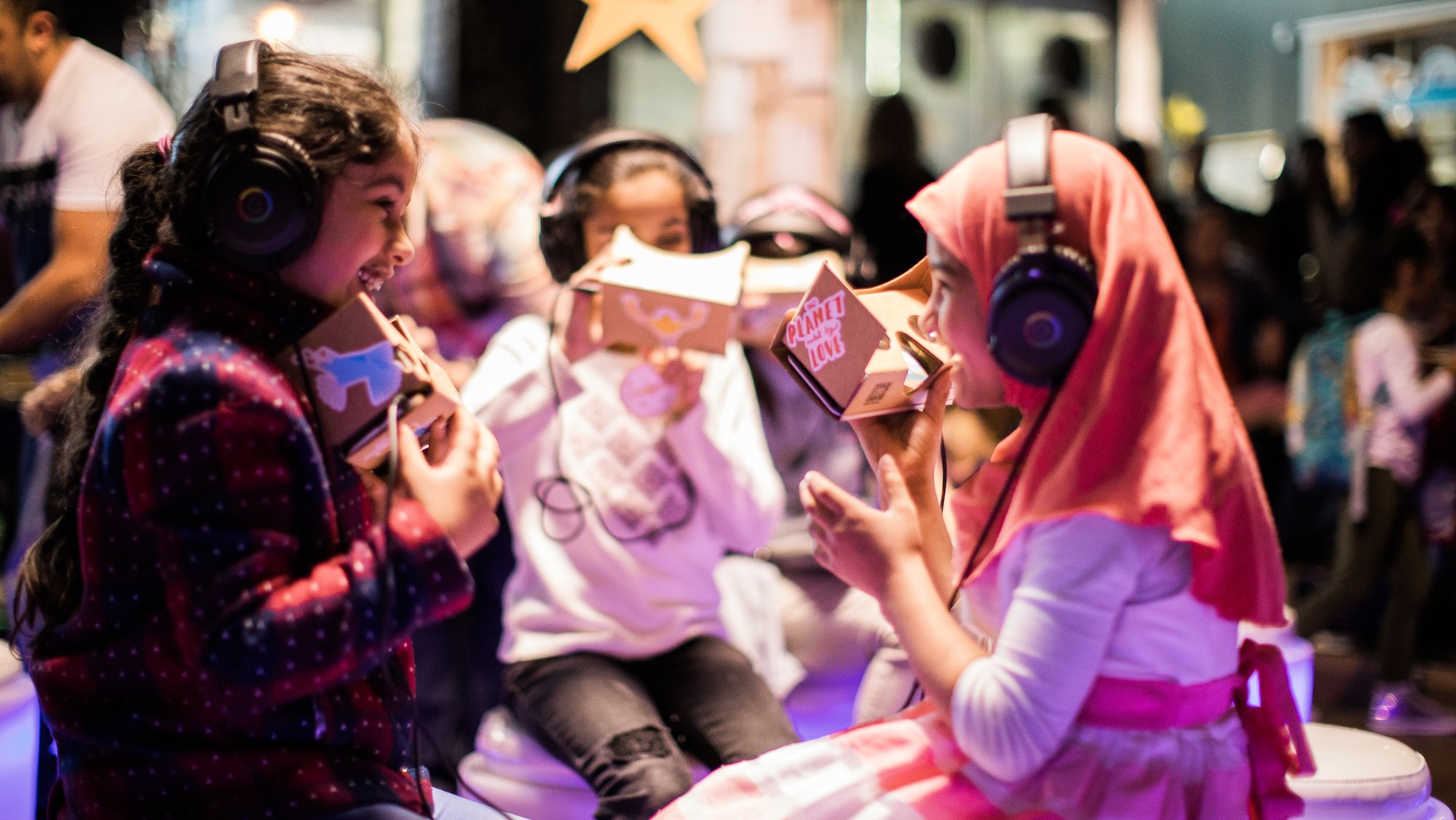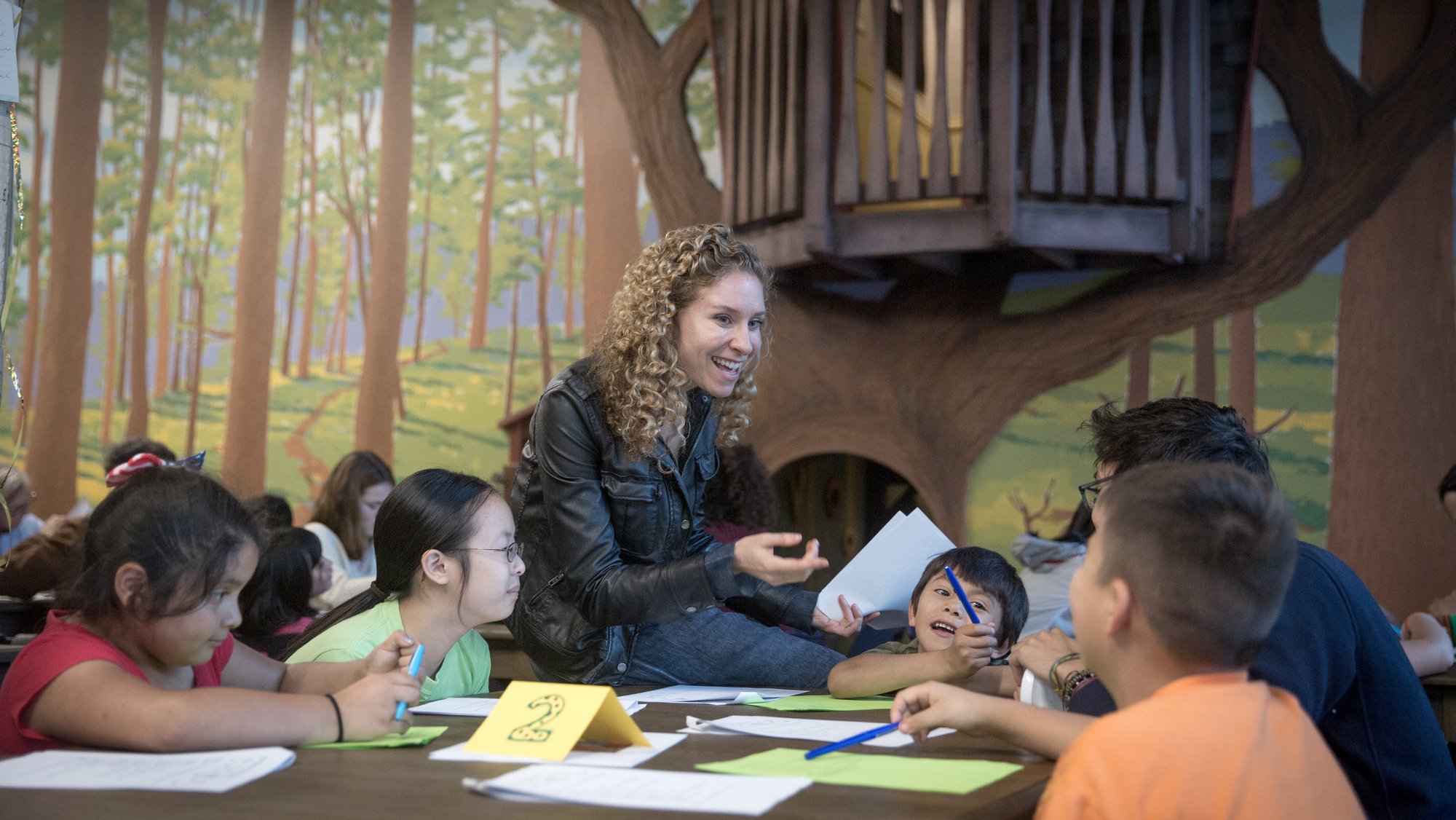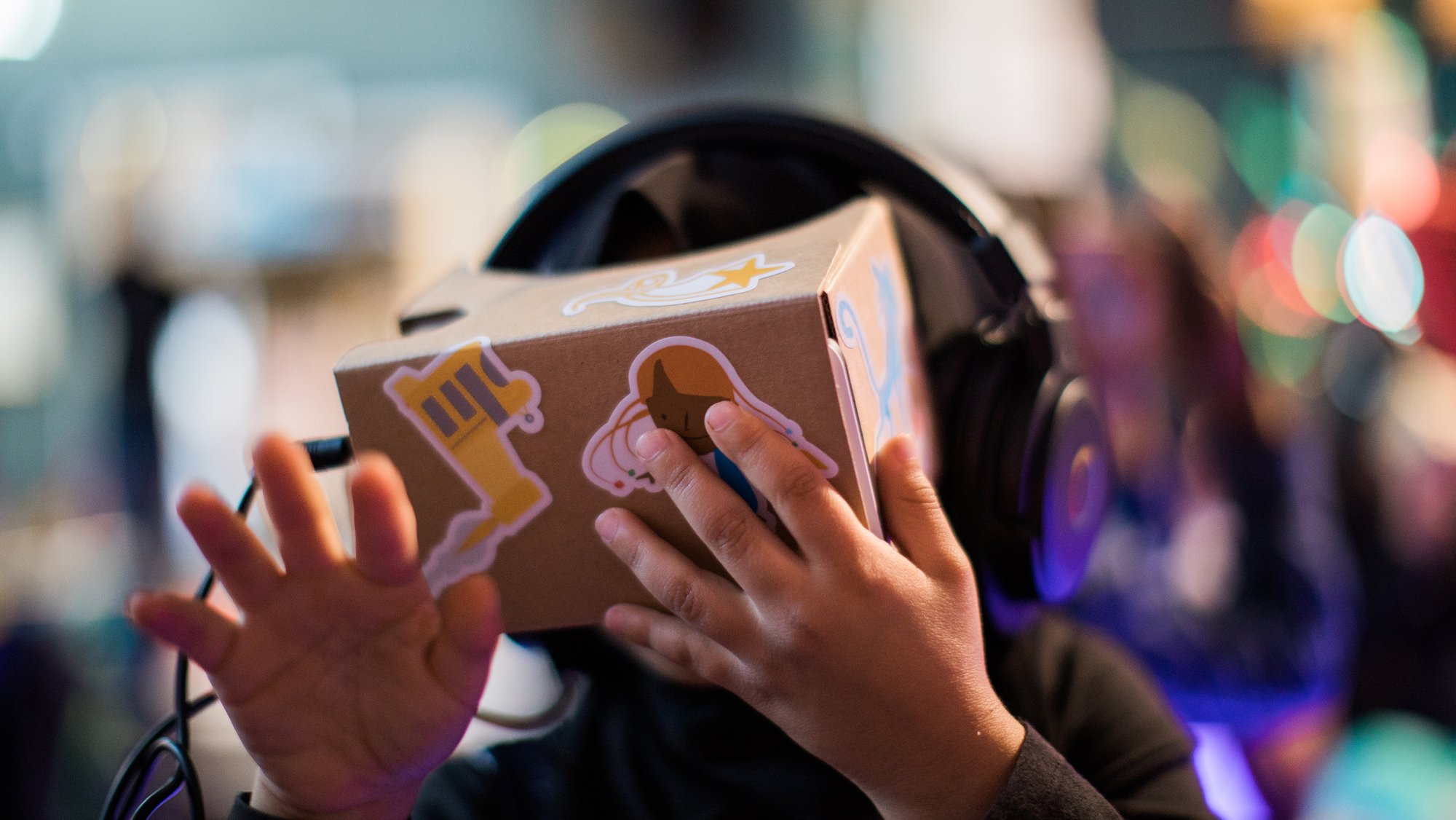In 2015, 826 Valencia—an organization that helps under-resourced students develop their writing skills—won a Google.org Impact Challenge grant to expand their programs in San Francisco’s Tenderloin neighborhood. After receiving the grant, 826 turned to a group of volunteer Googlers to figure out how to use technology to amplify students’ voices. The result was a story about a “planet ruled by love,” written by young students and told through a new medium—virtual reality.
The Keyword team sat down with two of the Googlers behind the project—Rebecca Sills and Ryan Chen—as well as Lauren Hall, Director of Grants and Evaluation at 826 Valencia.
Keyword: How did everyone get involved in this project?
Lauren: I first walked into 826 Valencia 12 years ago and couldn’t believe what I stumbled upon—it was the perfect wedding of my passions, writing and social justice. I’ve worked there ever since. Technology has changed a lot in the last 12 years, and though 826 will always make books, we’re exploring storytelling mediums that are more technologically relevant for younger generations. So we tapped into Google’s creative brainpower to incorporate technology into our programs and the way our kids tell stories.
Rebecca: The magic of 826 is the simple act of an adult sitting down with a kid to unleash the power of their voice. I wanted to be a part of that magic—and the effort at Google was scrappy from the get-go. I recruited Googlers with different skill sets to get involved and it got mightier and mightier. Our guiding principle was to use Google’s technology to empower students to tell their stories in new ways. And we thought that VR was an exciting way to do that.
Ryan: I wanted to get involved in this project in a way that only Google could, so when Rebecca and team came up with the idea of telling the story using Tilt Brush (a virtual reality app that lets you draw and paint in three-dimensional space), I jumped on it.
How did you come up with the “planet ruled by love” idea?
Lauren: The Google team proposed creating a story in Tilt Brush as a totally new experience for the kids, and our immediate reaction was “what the heck is Tilt Brush?” But the idea had so much energy that it was an emphatic “Yes!” on our end. Leading up to the election in the U.S., we felt a division in the country, in our communities, even on school campuses. Someone suggested that we prompt the kids to write a story about a planet ruled by love, and we immediately went for it. It felt like an antidote to the division and drama around us.
How did the kids write the story?
Rebecca: We wanted to honor what already works at 826—helping kids express themselves through writing—and add a new layer. Students worked with volunteer tutors to develop, write and edit their own stories about the planet ruled by love. So many creative ideas came out of that! And then we worked with 826 staff to pull a line from each of the kids' story—homes made of marshmallows, unicorn wolves, and love spread by nice words, to name a few—to make a version that represented all of their visions. From there, we turned the combined story into a 360-degree experience that they could watch in Cardboard.
Ryan, what was it like working in Tilt Brush?
Ryan: Prior to this project, I had been a 3D animator and illustrator working on screens and tablets. With Tilt Brush, you are creating in VR—it’s a cross between drawing and sculpture. When you first do it, you’re like, “OMG this is crazy. I’m inside the drawing.” After the students wrote the story, I drew rough storyboards and thumbnail sketches, then created the color pallet of the planet ruled by love. I wanted viewers to feel like they had one foot in Google world and one foot in another world. Then, I moved into Tilt Brush and created the final scenes.
How has 826’s approach to incorporating technology changed? Will you incorporate VR and AR into storytelling projects in the future?
Lauren: Technology has helped us create a wider audience for students’ stories. For example, we’ve started a program for kids to make their own podcasts. We put them on SoundCloud and the links get tweeted and forwarded, and now thousands of people can hear these students’ voices. But in terms of VR, we’d love to keep exploring—we think of it as a 21st-century version of storytelling. VR allows viewers to experience a story in a way that builds greater empathy, context and understanding.
What aspect of the project are you most proud of?
Rebecca: The moment when the kids first put on their Cardboards and stepped into their imaginary world—it was a definite career high! Most of the kids and their parents were experiencing Cardboard for the first time. We watched as they were transported to a new world, and it was so sweet to see the kids recognize their own voices and contributions.
Lauren: I agree! I loved watching them reach out to touch the homes made of marshmallows and the families spending time together. It was magical.


